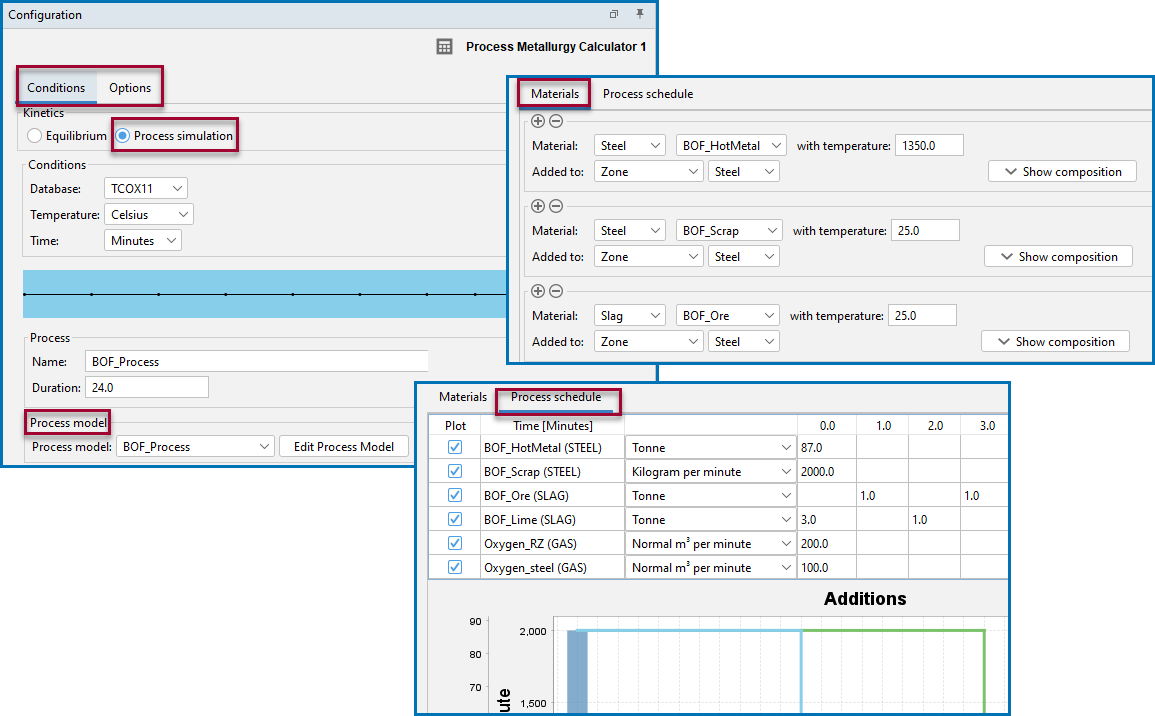Process Simulation: Conditions Tab
See Defining the Equilibrium Simulation for instructions that walk you through the steps that represent a simplified steelmaking process. A more complex process is described in Defining the Process Simulation and where the settings in the following topics are described.
Examples of using the Process Metallurgy Calculator for Basic Oxygen Furnace (BOF) (with and without kinetics), a Ladle Furnace (LF) simulation, an Argon Oxygen Decarbarization (AOD), and a Vacuum Oxygen Decarborization (VOD) simulation are included with your installation.
The following outlines what you can set on the Configuration window Conditions tab when working with the Process Metallurgy Calculator.
Below is based on selecting a Process simulation under Kinetics. The settings to complete are for the Process Model, the Materials, and the Process Schedule.
An example of the different sections on the Configuration window for a Process Metallurgy Calculator when a Process simulation type is selected. This screen shot is from the example PMET_04c. There are many settings available depending on the parameters.
The most recent available version of TCS Metal Oxide Solutions Database (TCOX) is selected by default.
The Process Metallurgy Module requires both a valid Maintenance and Support Subscription (M&SS) and a license for the TCS Metal Oxide Solutions Database (TCOX8 or newer).
It is not possible to use custom user databases with the Process Metallurgy Module. This is because several internal calculations, such as determining the component compositions of ionic phases, are dependent on the database. Therefore, only TCS Metal Oxide Solutions Database (TCOX) versions 8 and newer, and to a limited extent, OXDEMO, can be used with this Module.
All users can test the Process Metallurgy Module with the included OXDEMO database, which is limited to these elements: Al, C, Ca, Fe, O, S, and Si. For more information about this and other products visit our website.
Select a Temperature unit (Kelvin, Celsius, or Fahrenheit).
Select a Time unit (Seconds, Minutes, Hours, or Days).
Additional Settings
The settings sections for all of the Configuration window are described in these topics:
